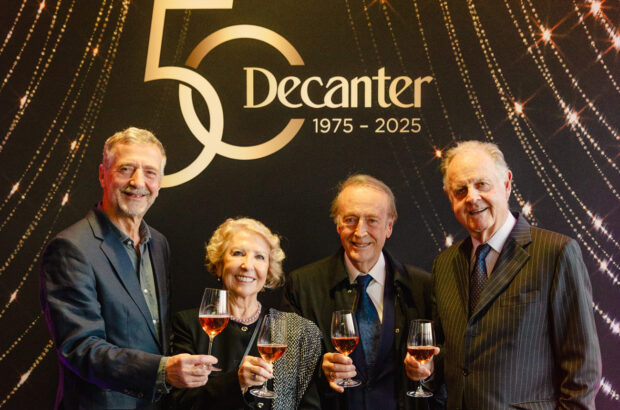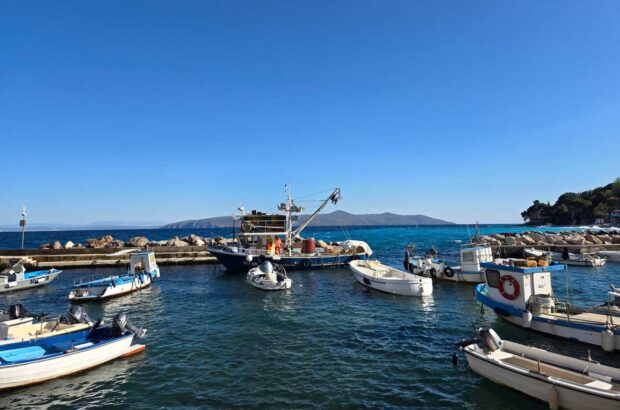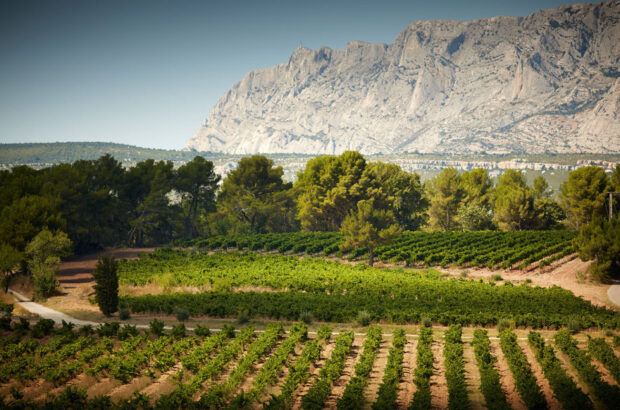Jane Anson reports from an alternative Bordeaux wine tour that took her to the outer reaches of the region's vineyards.
My alternative Bordeaux wine tour happened more by chance than design, and it started with simply tidying my office.
All accredited tutors at the Bordeaux Ecole du Vin are given a huge laminated map of the 60 appellations that make up this winemaking region, color-coded for ease of reading.
If you’ve ever been to a class in the smart tasting rooms in downtown Bordeaux, or any of their courses around the world, you’ll have seen it.
Anyway, years after receiving my own map, I finally hung it up on the walls of my office, and sat looking at it for a while, tracing its familiar forms.
One name struck me. Gazinet. On the map, Gazinet sits on the furthest edges of the orange-shaded AOC Graves region, above Pessac in an awkward spot just off the A63 road out to Arcachon Bay.
It is neither south of the city centre where Graves theoretically begins, nor quite north enough to be counted as the Médoc.
I had never been to Gazinet. And it started me thinking about all of those outlying villages and hamlets that edge the Bordeaux map – lucky enough to be situated within the differently colored zones that signal plantable land, but unlucky enough to be situated far away from the more prestigious strips along the Garonne and Dordogne rivers, and nowhere near the famous villages that we more usually concentrate on.
They offer a tantalising piece of the puzzle of Bordeaux – why were they chosen as the furthest allowable planting spots? What lies beyond? And what can they teach us about the topography and terroirs of Bordeaux?
I decided to find out. Tracing the outskirts of the Bordeaux wine growing area is no small feat. In total, Bordeaux covers 213km north to south and 105km east to west.
Taking the roads that lead you around the outer edges of the vineyards means covering somewhere close to 630km in total and takes you through 11 appellations.
Large swathes, as you might expect, are AOC Bordeaux and AOC Bordeaux Superior (the two make up 53% of the total surface area of Bordeaux vineyards), but the other appellations that head right to these outermost limits include Graves, Médoc, Haut-Médoc, Entre deux Mers, Côtes de Castillon, Blaye Côtes de Bordeaux, Bourg, Saint-Foy and Francs Côtes de Bordeaux.
The outlying vineyards of AOC Médoc in the commune of Jau-et-Dignac take you to within 20km of the Pointe de Grave at the very tip of the peninsula, while the eastern edges of Saint-Avit-Saint-Nazaire commune in AOC Sainte-Foy-Bordeaux nudge up against the more continental climate of the Dordogne, home to foie gras and black truffles.
The lowest spot is 14m above sea level, and the highest 120m. These outer edges of the snail’s shell of Bordeaux appellations are the often forgotten layer of the regions’ 7,000 estates, and yet have a lot to teach us.
Four chateaux to visit on an alternative Bordeaux wine tour:
- Château L’Abbaye, Blaye, Côtes de Bordeaux
- Château Saint Aubin, Médoc
- Château Roquetaillade La Grange, Graves
- Château Luchey-Halde, Pessac Léognan
To start my geography lesson, I headed to Gazinet. It turns that it’s impossible to actually locate any vines here. Instead it is full of low-lying recently-built houses, and is surrounded by pine trees.
It feels more like a beach town, with sandy-gravel soils, the quiet town centre enlivened by an oyster seller on the Sunday morning that I was there, no doubt headed in from the nearby coast that lies maybe 30 minutes away.
Not one winemaker is listed in Gazinet, the closest being 4km away in Canéjan and I now know that the last vineyard in Gazinet, according to the Syndicate de Graves, disappeared some time ago.
The commune has been removed from the list of allowable planting areas in the latest winemaking charter for Graves, published on 28 August 2015 (it just needs to be removed from the Ecole du Vin map now). Proof that Bordeaux is a living, moveable vineyard, vines pulled up here to be planted there, responding not only to economics but to soil studies, drainage channels, ambition.
A rather sad start, perhaps, to my quest to get to grips with the edges of Bordeaux (although signs advertising Bourru, the just-fermented juice of this year’s harvest, were hanging outside several grocers shops in neighbouring Cestas, so the link to the vineyards is still alive and well). I pressed on undeterred.
The new northwestern outer limit of Graves, it turns out, is Saucats, where the road leads you past a strip of mainly flat land with corn fields and hunting grounds on one side and pine forests on the other that give way eventually to vineyards between Cabanac and Guillos, where the landscape is higher, prettier, more sweeping.
At first I drove past two odd plots, just a few hundred meters square, surrounded by trees, lonely and unloved, still unharvested in early October.
Within minutes, the vineyards had multiplied in size, although still sparsely planted, with perhaps 3,500 or 4,000 vines per hectare and plenty of missing spaces among the rows, straying dangerously close to the allowable 20%.
It wasn’t until I got to Budos that the landscape finally sprang to life, with beautiful south-facing valleys that provide perfect plantations around the 14th century Chateau de Budos, built by Pope Clément V (the only pope to be born in the Gironde region).
AOC Sauternes never supplants Graves at the furthest plantable edge of Bordeaux, but the road begins to wind through its outer edges, where willows trees in private walled gardens, stately chateau buildings and well planted slopes speak of a wealthy past, even if today things are tough.
Sauternes passes back into Graves at its southernmost part, in the commune of Mazères.
Proof that the furthest plantings of the appellation can offer some wonderful wines comes with Chateau Roquetaillade la Grange, owned by Dominique Guignard, the president of the appellation and one of my favorite Graves producers.
I have long followed them, and visited the chateau before, but until this drive had not fully placed it within its geography. Cheering that this excellent wine sits at the outer limits, proof that the AOCs have integrity in intent, even if not always in execution.
One of the fascinating things you discover, out here in these nebulous spaces between AOC and non AOC, are the businesses that have grown up through the promise of the nearby vineyards.
In Cabanc-et-Villegrains, a stack of pine staves marks the drying yard for Pierre Goujon SA, producer of wooden wine cases that make a virtue of the nearby pine forests. Further along, on the outskirts of Landiras, Les Grands Chais de France’s takes advantage of cheap non-plantable land for one of its two French production sites.
This one sees 170 million bottles of wine and 24 million bag-in-box produced each year in a site covering 85,000m2.
I made it down, on this first trip, to Grignols and Cours les Bains, where the vineyard land passes out of AOC Graves and into AOC Bordeaux.
These are the most southerly communes of the region, just scooped into Bordeaux and out of the Côtes de Marmandais, and land here is given over to polyculture; we’re not far from the tomatoes and melons of the Lot-et-Garonne, and you can pick up a hectare of vines for €15,000, compared to €400,000 in the prestigious northern part of the Graves.
Don’t expect any sympathy from the neighboring Cave du Marmandais in Cocument, where the distance of a few hundred meters translates into €9,000 for the price of one hectare – and the idea of being on the outer edges of Bordeaux is a reason not for pity, but perhaps just a touch of envy.







